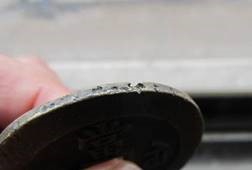The importance of good engineering not only lies in the application of technological know-how but also in the quality measurement and constant improvement of production processes.
In order to produce alloys with excellent properties and quality, a specific and reliable production process and important quality control measures are needed. In this article, we'll focus on the quality control measures of alloy production in each of the three processes: melting, forming, and post-casting treatment.
What are the quality control measures in the melting process?
Although the melting process of different copper alloys varies, there are some main principles, melting material requirements, and a certain melting operation that we recommend to be followed.
The general principle of copper alloy melting
It is important that the surface of all furnace charges are cleaned, preheated and the moisture of the solvent is removed. As copper alloy liquid is easy to be oxidized an absorbs gas, it should be melted quickly and poured in time. Furthermore, the melting temperature and the furnace gas should be adequately controlled and the furnace inspection should be regularly performed.
Melting material requirements
We divide raw metal materials into pure metal materials with a required purity of 99.9%, intermediate alloy materials, and recycled materials. To reduce the melting temperature, the intermediate alloy is sometimes used. It is important that the proportion of the intermediate alloy formula is accurate to avoid the composition error in the early stage. Last but not least, it is required to clean the surface of the recycled material, remove oil and dry it to avoid impurities and other metals.
Melting operation
The melting operation consists of four important steps each of which needs to be performed carefully.
- When charging the induction furnace, it should be filled as much as possible to reduce the gap and avoid the furnace lining damage caused by local overheating.
- Alloys which tend to be easily oxidized and burnt, we recommend melting under the covering agent.
- To determine the quality of the alloy and its related performance, the control of the chemical composition with the use of a direct-reading spectrum analyzer is needed.
- To detect air content in the furnace sample, an atmospheric solidification method is used. If there is gas, the sample shrinkage will be poor; if there is a large amount of gas, the sample will expand. If the sample shrinkage is large, then the gas content is qualified.

What are the quality control measures in the forming process?
During the forming process, six important control steps are relevant:
- Test the molding sand for its purity, particle size, shape, the content of micro powder, and water content.
- Consider the flow field, temperature field distribution, and riser design in the whole casting process design to avoid inclusion or hot cracks.
- Clean the mold cavity after molding and apply the coating carefully.
- As the sand mold is subject to the buoyancy of liquid metal during pouring, make sure to fasten the upper sandbox and to set the iron pressure and counterweight reasonably to avoid accidents and metal liquid outflow.
- Ensure sufficient water pressure and a stable flow rate during pouring.
- Set different unpacking times and cooling modes according to different alloy characteristics.
What are effective post-casting treatments for high quality alloys?
The post-casting process consists of the cleaning of the casting part, various post-processing treatments like heat treatment to improve properties, microstructure, and metallography but also solution treatment to obtain a supersaturated solid solution for better corrosion resistance. The treatment of aging strengthening is used to increase strength and reduce toughness.
Rough machining
Furthermore, rough machining is an essential means to detect the quality of casting parts. Through rough machining, blowholes, inclusions, sand holes, and other defects in the castings can be detected and it can be found out whether there is enough machining allowance.


Non-destructive testing
For the defects that do not appear in rough machining or defects that cannot be observed by the naked eye or having high requirements for internal quality, we need to carry out non-destructive testing as an essential means to control the internal quality of castings.
Finished machining
One of the last steps close to the product end is the process of finished machining where we provide individual processing solutions or put into practice suggestions coming directly from the client. According to the characteristics of the products, we carry out the final inspection before delivery to confirm that the products meet the customer's technical requirements.
These principles and methods for production control make AMPCO METAL stand out as a leader in the metal forming industry, guaranteeing high performing copper alloys and meeting the needs of its customers.
If you want to dive deeper into the world of copper and copper alloys, download a free extract of our book "Metallurgy of Copper and Copper Alloys". It is a compilation of metallurgical work made on copper and copper alloys that has been produced in collaboration with lecturer and metallurgy expert Piet Wenschot.




